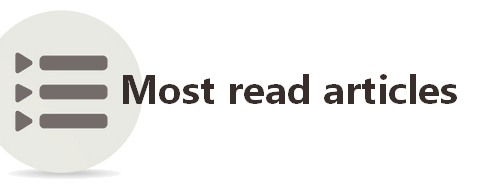Pioneers: Widows of Hamdalaye feeding
their calves on soy milk
For some time now I have been receiving mail asking me for news about the widows of Hamdalaye in Ouagadougou. Thanks to your generosity they each received a Goudali cow on January 29 last year. Today, on Women’s International Day, I am happy to reply, especially since I have good news.
Indeed, in January last year I reported: « ”The six widows in Hamdalaye have each received a Goudali cow”.. Yesterday I had the opportunity of going to see some of the women. They told me that of the six Goudali cows (in fact heifers of 18 months to 2 years) four have already calved and the two others are in calf. The women asked me to convey their thanks to you. One of them told me that before, she dared not even go out in the neighbourhood. She felt ashamed of having become “a woman pastoralist” without a cow. Today she is happy again and very proud of her Goudali, which is admired by all her neighbours.. Other women told me that selling the milk enabled them to send their children to school and pay for their school kits.
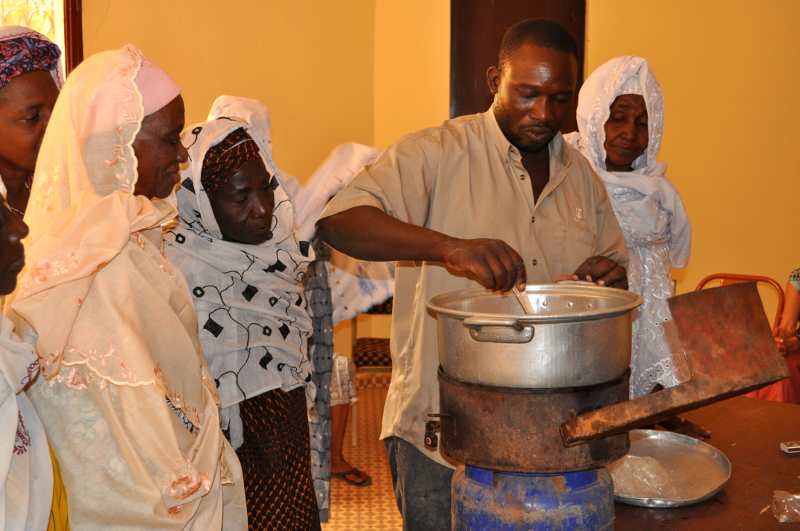
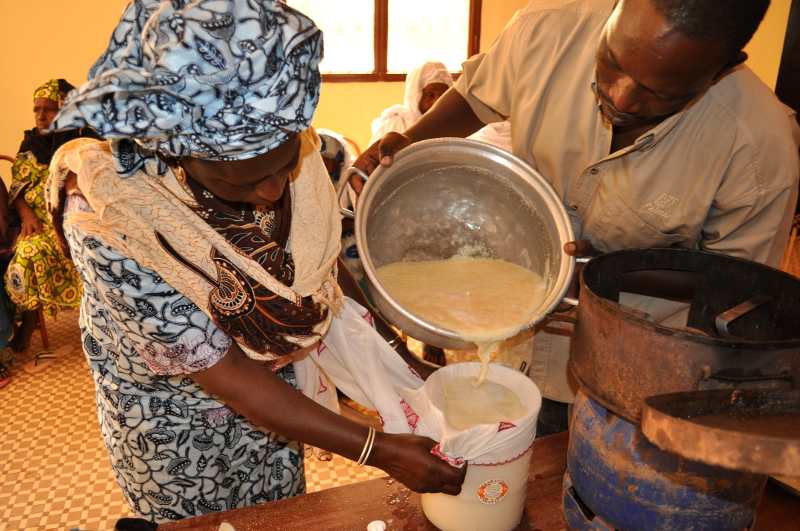 3 or 4 weeks ago we organised a training seminar for the widows and other women in their neighbourhood, led by a dairy farmer from the outskirts of Ouagadougou, Mr Modeste Ouédraogo.(Also read : n° 379: Our calves are waiting for their soy milk ).
3 or 4 weeks ago we organised a training seminar for the widows and other women in their neighbourhood, led by a dairy farmer from the outskirts of Ouagadougou, Mr Modeste Ouédraogo.(Also read : n° 379: Our calves are waiting for their soy milk ).
He showed the attending women how to prepare the soy milk formula:
This is how it is done:
Take 5 litres of water and heat it. At boiling point add 1 kg of soy flour, ground from fresh soy grains, while stirring. Let boil for a few minutes and keep stirring. Leave to cool and add 50 grams of powder sugar. When the mix has cooled add 10 to 15 grams of a multivitamin complement (for example BIACALCIUM which can be supplied by a veterinary pharmacist). Then filter the mix through a clean cloth. The solid residue (which looks a bit like couscous) is very good for the mother!
As soon as the calf has an adequate intake of soy milk, suckling can be reduced and at the same time the calf can be given a little solid fodder, such as fresh grass of low fibre content, a handful of feed complement or hay of good quality.
All participants in the seminar were very interested in the soy formula.
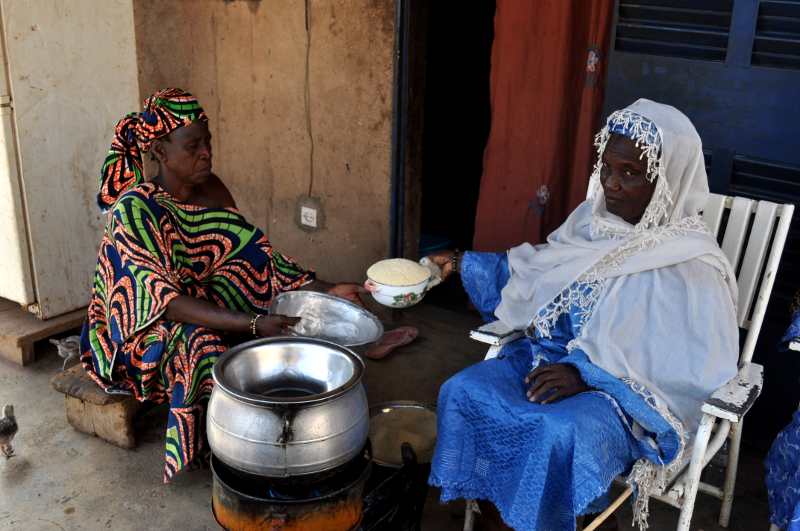
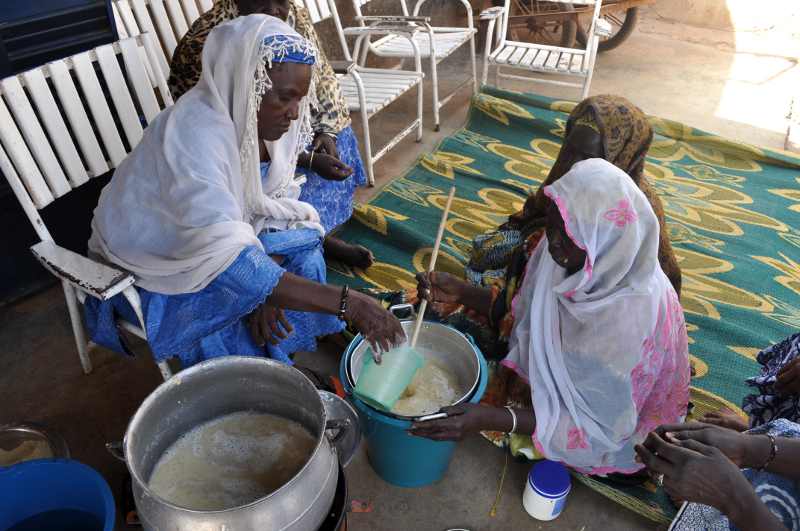 Now the mix is filtered through a colander Now, just 3 weeks later, I was able to attend a training course organised by one of the widows in her courtyard.Her demonstration was perfect. AÏssata Diallo took 5 litres of water for 1 kg of soy flour and then produced nearly 4 litres of soymilk. She has only two calves to feed. Each one drinks 1 litre in the morning and 1 in the afternoon. After milking her cows she now gets 3 to 4 litres to spare! Every day!
Now the mix is filtered through a colander Now, just 3 weeks later, I was able to attend a training course organised by one of the widows in her courtyard.Her demonstration was perfect. AÏssata Diallo took 5 litres of water for 1 kg of soy flour and then produced nearly 4 litres of soymilk. She has only two calves to feed. Each one drinks 1 litre in the morning and 1 in the afternoon. After milking her cows she now gets 3 to 4 litres to spare! Every day!
It might seem a small amount! But for this woman it is a lot. Selling milk does in fact give her an extra income of 1000 CFA francs a day or 30 000 a month, which is more than the legal minimum wage in the country.
The widows of Hamdalaye have become pioneers.
The practice of feeding calves with soymilk is still not very common in Burkina. It is never easy to change habits. For each attempt there is always an easy excuse, the most frequent one being ”I do not have the means!” even when the problem lies elsewhere. But now, find me the dairy farmer who has the nerve to pretend that he is unable to do what a widow in Hamdalaye has already achieved!

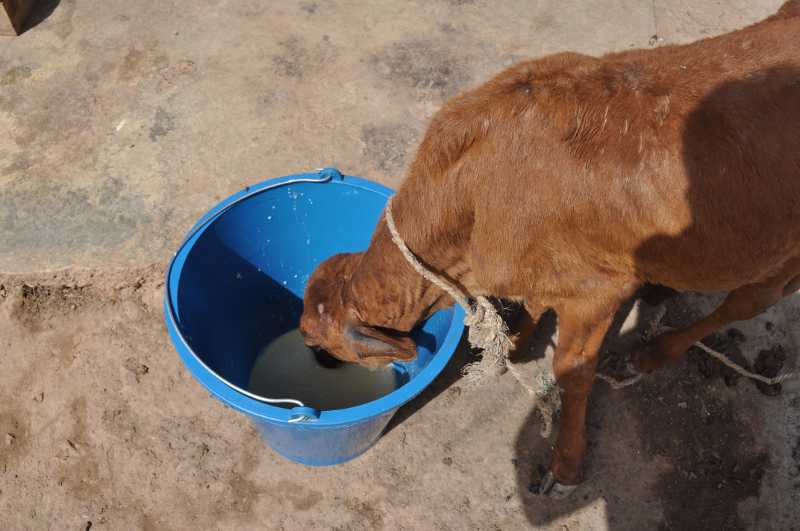 At present there is a shortage of milk at many dairies. Conventional pastoralists have not yet solved the problem of feeding their cows during the dry season. It is necessary to continue to focus on the production and storage of fodder. But soymilk offers an opportunity for the dairies.Its effectiveness is immediate . At milking time the dairy farmer will soon realise that if he has given 1 litre of soy milk to the calf he will be left with an additional litre to sell, regardless of the breed of the calf: Fulani zebu, Goudali, Azawak or cross breed. This first easy step could encourage the traditional farmer to move on to other innovations, like fodder production, which is just as important, but more difficult to carry out.
At present there is a shortage of milk at many dairies. Conventional pastoralists have not yet solved the problem of feeding their cows during the dry season. It is necessary to continue to focus on the production and storage of fodder. But soymilk offers an opportunity for the dairies.Its effectiveness is immediate . At milking time the dairy farmer will soon realise that if he has given 1 litre of soy milk to the calf he will be left with an additional litre to sell, regardless of the breed of the calf: Fulani zebu, Goudali, Azawak or cross breed. This first easy step could encourage the traditional farmer to move on to other innovations, like fodder production, which is just as important, but more difficult to carry out.
It should also be remembered that soy is an excellent alternative to the increasingly expensive cotton seed cakes, more and more difficult to find. Dairy farmers could grow soy themselves (when they have enough land) or come to an agreement with neighbouring peasants, asking them to grow the soy to sell it to them at harvest time (or even give it in exchange for manure …)
Let us bet that soy milk is a first step paving the way for further ones !
Koudougou, March 8, 2012
Maurice Oudet
Director, SEDELAN









